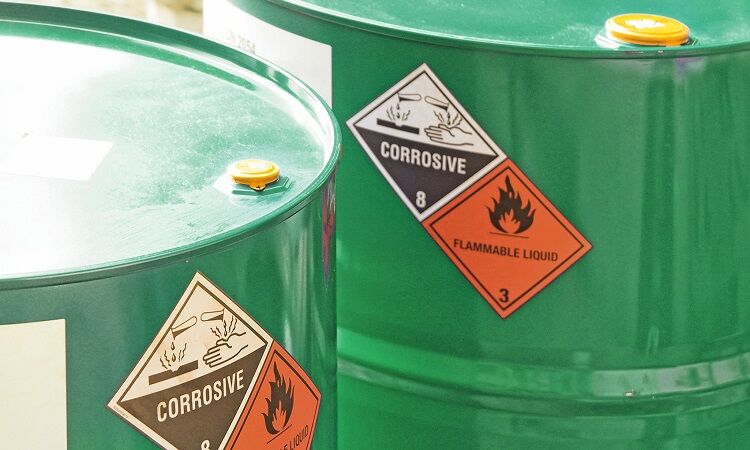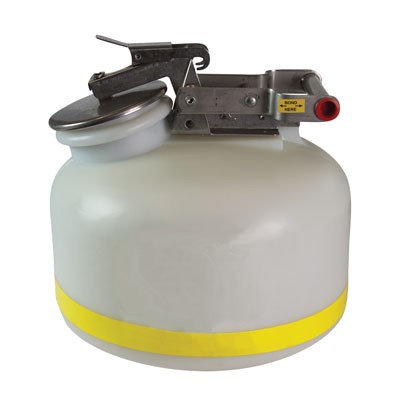Cutting-edge Industrial Wastewater Treatment Solutions: Protecting the Environment
Cutting-edge Industrial Wastewater Treatment Solutions: Protecting the Environment
Blog Article
Just How Liquid Garbage Disposal Works: A Comprehensive Introduction of Techniques and Technologies Employed

Overview of Fluid Waste Types
The intricacy of liquid waste kinds requires a thorough understanding of their attributes and effects for disposal. Liquid waste can broadly be classified right into several kinds, including commercial, community, agricultural, and unsafe waste. Each category exhibits distinct residential properties, requiring certain administration strategies to mitigate ecological and health threats.
Industrial liquid waste stems from producing procedures and usually consists of a series of pollutants, such as heavy steels, solvents, and organic substances. Metropolitan fluid waste, mainly making up wastewater from houses and industrial facilities, includes raw material, nutrients, and pathogens (industrial wastewater treatment). Agricultural fluid waste, including runoff from farms, may contain fertilizers, chemicals, and animal waste, presenting dangers to water high quality and environments
Unsafe fluid waste is identified by its toxicity, sensitivity, or potential to cause damage. This category includes substances like acids, bases, and particular chemicals that require rigid handling and disposal protocols. Comprehending these diverse liquid waste types is critical for creating effective disposal techniques and making sure compliance with ecological regulations. Appropriate classification and characterization are vital for applying suitable treatment strategies and reducing the unfavorable effect on public health and the environment.
Physical Treatment Methods

Testing is the initial step, where larger bits and debris are gotten rid of from the liquid waste utilizing displays or grates. This process shields downstream devices from damage and makes sure smoother operation. Complying with screening, sedimentation makes use of gravitational pressure to separate solids from liquids. In sedimentation tanks, much heavier fragments resolve near the bottom, creating a sludge layer, while the made clear liquid can be further dealt with.
Filtering is an additional crucial method that includes passing the fluid via permeable products, such as sand or membranes, to record smaller sized particles. This step improves the top quality of the liquid, making it suitable for succeeding therapy processes.

Chemical Treatment Methods
Chemical treatment methods are crucial for efficiently handling liquid waste, particularly in dealing with dissolved and colloidal impurities that physical approaches may not adequately remove. These methods use different chemical agents to reduce the effects of, speed up, or transform dangerous substances right into much less hazardous kinds.
One common technique is coagulation and flocculation, where chemicals such as alum or ferric chloride are added to advertise the gathering of put on hold bits. This procedure enhances sedimentation, enabling easier elimination of the resulting sludge. Additionally, oxidation procedures, employing agents like chlorine or ozone, are used to damage down complicated natural substances and microorganisms, rendering the waste more secure for discharge or additional treatment.
Neutralization is an additional vital strategy, which changes the pH of acidic or alkaline waste streams to neutral levels, stopping potential injury to downstream systems and the setting. Additionally, progressed oxidation processes (AOPs) make use of mixes of oxidants and ultraviolet light to deteriorate persistent pollutants, achieving a higher level of therapy performance.
Organic Treatment Processes
Biological therapy processes play a crucial duty in the management of liquid waste by using bacteria to disintegrate raw material and lower impurity levels. These procedures can be broadly classified into anaerobic and cardio treatments, each employing particular microbial areas to achieve efficient waste degradation.
Cardio treatment includes the use of oxygen to promote the failure of organic materials by bacteria. This process is commonly applied in turned on sludge systems, where aeration storage tanks give a favorable environment for microbial development, causing the oxidation of natural pollutants. The resultant biomass can be divided from dealt with effluent via sedimentation.
On the other hand, anaerobic treatment takes place in the lack of oxygen, depending on various germs to damage down raw material. This approach is especially helpful for high-strength waste, as it creates biogas, a renewable resource source, while reducing sludge manufacturing. Technologies such as anaerobic digesters are often employed in local and industrial applications.
Both anaerobic and cardiovascular biological therapies not only minimize the environmental influence of liquid waste but likewise facilitate source recuperation, making them necessary components of lasting waste management approaches. Their flexibility, performance, and effectiveness helpful hints sustain their widespread application across various markets.
Arising Technologies in Disposal
Innovative approaches to liquid garbage disposal are swiftly evolving, driven by innovations in technology and an enhancing focus on sustainability. Among these emerging modern technologies, membrane layer bioreactors (MBRs) have actually obtained traction for their ability to integrate organic treatment with membrane filtering, resulting in high-grade effluent that can be reused in numerous applications. MBRs make it possible for smaller sized footprints and extra reliable operations contrasted to traditional systems.
An additional encouraging advancement is making use of anaerobic food digestion integrated with nutrient recovery technologies, which not just deals with liquid waste but additionally generates biogas and recoups beneficial nutrients like nitrogen and phosphorus. This twin benefit boosts resource performance and decreases environmental effect.
Additionally, advanced oxidation processes (AOPs) are being adopted for the destruction of intricate natural contaminants. These approaches utilize effective oxidants and drivers to break down pollutants at the molecular level, providing a very effective remedy for challenging waste streams.
In addition, the integration of expert system and equipment learning in waste management systems is enhancing functional performance and predictive upkeep, leading to reduced expenses and enhanced ecological conformity. These modern technologies show a substantial change towards even more efficient and sustainable liquid waste disposal practices.
Verdict
Finally, effective liquid garbage disposal requires a thorough understanding of different techniques and technologies. The combination of physical, chemical, and biological therapy techniques makes certain the reliable management of diverse waste types. Additionally, the emergence of innovative innovations improves treatment efficacy and promotes sustainability in waste management techniques. By constantly progressing these approaches, it ends up being feasible to attend to the expanding challenges related to fluid waste, inevitably adding to environmental management and source recuperation.
Fluid waste disposal is a crucial aspect of environmental administration, needing a thorough understanding of numerous methods and modern technologies customized to different waste kinds. Liquid waste can generally be classified right into a number of kinds, including industrial, metropolitan, farming, and dangerous waste. Agricultural fluid Get the facts waste, consisting have a peek at these guys of overflow from ranches, might contain fertilizers, pesticides, and pet waste, posing dangers to water high quality and ecological communities.
Different physical therapy techniques play a critical function in handling fluid waste properly - industrial wastewater treatment.In final thought, effective liquid waste disposal requires a thorough understanding of numerous strategies and technologies
Report this page